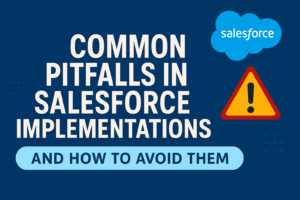BLOG
3 Things Holding Back Lead Generation for Property
With such a large pool of potential buyers in the market, how do you know which ones are most ready to buy from you? How can you best target your efforts to generate leads that actually care about your product? If you’re struggling to find and convert leads, it’s time to re-evaluate how you’re approaching driving enquiry.
Keep reading to discover three ways you can supercharge your lead generation strategy.
1. Relying on one channel to market
While there are some channels that make obvious sense for property marketing (i.e. Domain, REA), it can be a difficult choice when it comes to choosing channels across social, search engine marketing and display advertising. As a result, many property developers choose to stick with what they know.
The key to succeeding in lead generation is to diversify your options and understand how each channel coincides with each stage of the purchase process. The following is a quick overview of platforms you could use:
Stage 1 – Initial Information Gathering
Social channels like Facebook for example, are crucial for the start of the buying process, where you can introduce your project to a targeted audience and create awareness.
Facebook is a largely conversational medium that encourages users to tag and share engaging posts with each other, which is essential for establishing awareness and selling the vision (an obvious big win when it comes to the property market).
The area that Facebook succeeds best at is the ability to test messaging as well as utilise several types of ads including:
- Video. A very low cost method, video is extremely effective in building awareness and selling the vision.
- Carousel. Carousel ads allow users to scroll through a set of images/copy that dive into different aspects of the product.
The most useful aspect of Facebook advertising is the opportunity to test messaging and creative across all of the ad types, meaning you can always run with the most effective combination for generating leads.

Stage 2 – Review & Evaluation
Beyond the research process and information gathering on the website, Facebook is also instrumental for the more decisive steps for the purchase, when the offer is reintroduced through retargeting.
Most buyers are often not ready to convert on their first touch. In fact, only 2% of traffic to your website converts on their first touch. For the remaining majority of users, retargeting enables you to reach the same users again with the exact same information they have already browsed or additional information for them to better understand your product.
Stage 3 – Decision Making
Search engine marketing like Google Adwords is representative of an audience with higher intent, as they are actively searching for options to consider.
The nature of Google Adwords means that you can make your conversion goal far more intent-driven, where as opposed to inviting users to download floor plans, you invite them to book an appointment. With this in mind, the keywords that you choose to target are crucial to ensuring the right audience is seeing the right ads.
By incorporating a range of channels, you can easily target audiences across the entire purchase process. From there, it is simply a matter of testing and optimising based on what works best for your specific project and the specific audience(s).
2. Being too focused on ‘on brand’
The importance of developing a strong and sustainable brand platform prior to project launch is critical in establishing a defensible position in a competitive market. Marketers spend large volumes of time and effort to come up with that single minded proposition that will strongly resonate with the market. The communication of this proposition is the ‘golden thread’ that runs through all aspects of the collateral to ensure a unified campaign.
Whilst it is an absolute given that you do not want to stray too far off message or from brand guidelines, when it comes to entering the lead generation phase there is a strong case for bending the rules to achieve your desired metrics.
As you go to market, (arguably) the most significant metric is lead conversion rate, and everything that affects the volume and velocity of conversions.
So, when creating new assets specific to lead generation (whether that’s landing pages or display banners), it is incredibly beneficial to test how different elements (heading, colours, copy) work – even if they don’t necessarily align with the balance of project marketing material.
For example, CTA button styles and colours can have a big impact on whether a prospect fills out a form. CrazyEgg has identified the following as being crucial for high converting CTA buttons: a defined shape or border, a different colour to their surroundings and text. So if your colour palette is scattered throughout the landing page, the best way to make your CTA button stand out is for it to not match your existing scheme.
The main thing to remember is to be open-minded about conversion rate optimisation and consider the importance of testing for the goal of increasing lead conversion. In effect, the lead generation space becomes the perfect feedback loop between marketing, sales and your prospects – giving up some control over being on brand affords the opportunity to be on target, which is ultimately what we’re all here for.

3. Not testing or optimising
Why do we test and optimise? We simply can’t rely on a ‘spray and pray’ approach, and we can’t rely on impressions and awareness alone. We need real, tangible results produced by creating continuously higher performing creative and copy.
On the matter of testing and optimising, what can you do to make this process as simple as possible to roll out, but also extremely effective?
Here are some best practices to keep in mind:
- Set goals. Know what you’re testing and why. Set out with a purpose. Is it for more clicks or conversions? This will help inform how you approach…
- Benchmarking. Your core metrics will change over time, so this is crucial for keeping track of changes.
- Track progress regularly (every day) for patterns or shifts.
- Review performance at a timeframe that provides relevant insights. Too early, and you might be misreading. Too late, and you’ll risk spending more than you need.
Put your insights into perspective and try to understand why the audience reacted in this way. Adjust your next step to build on this success.
Key takeaways
- Explore new platforms – each online channel supports information gathering for each stage of the purchase process. So you are not only increasing the reach but, also the efficacy.
- Let go to gain more control – our branding guidelines and design assets aren’t always conducive to high conversion rates, and that’s okay. Combining testing and best practices with your existing assets will produce the best results.
- Set relevant targets – there is always an opportunity to improve the results of your campaign(s), as long as you do it the right way. Set goals, benchmark and review performance across a suitable time period.











